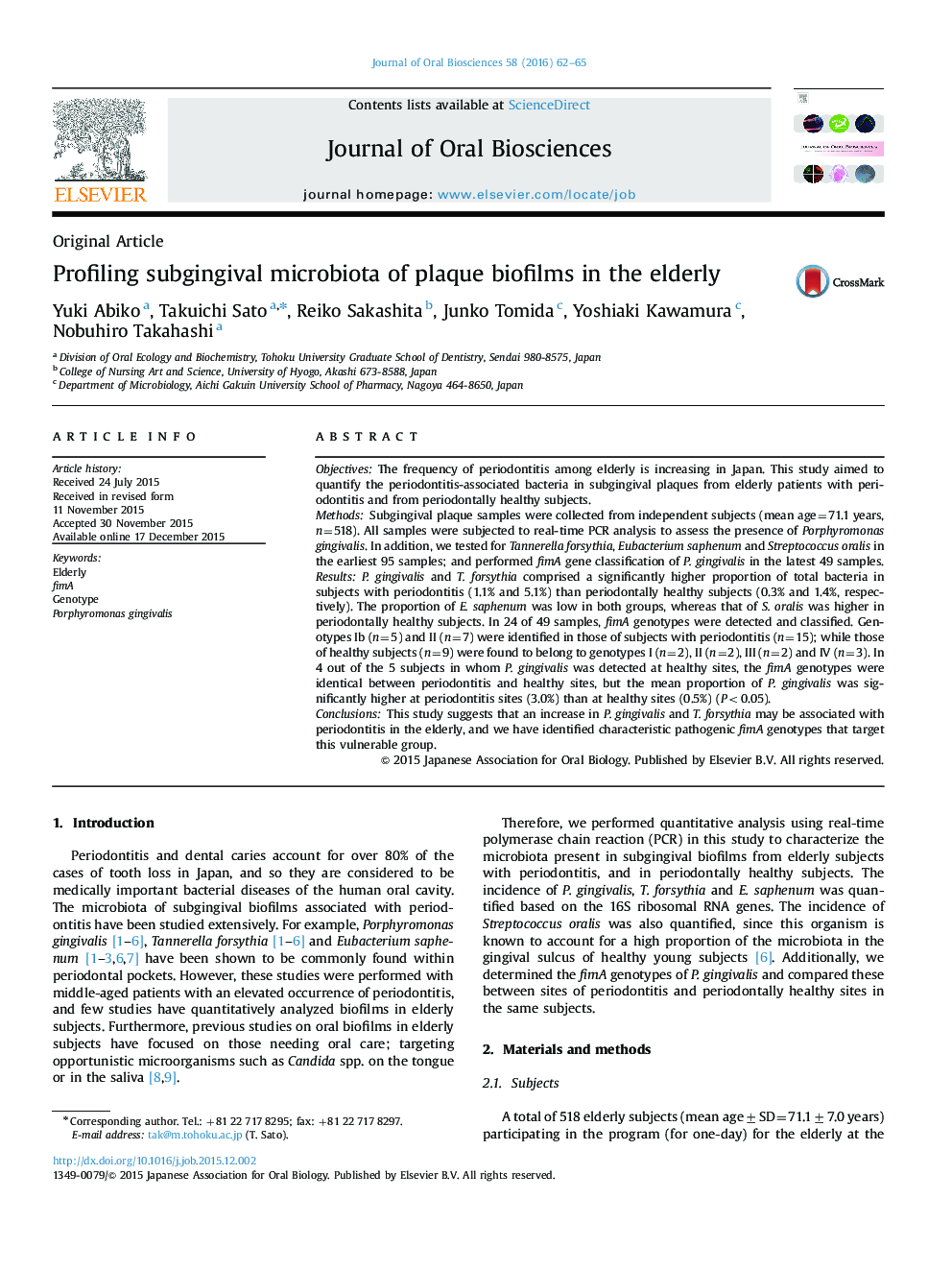| Article ID | Journal | Published Year | Pages | File Type |
|---|---|---|---|---|
| 2776776 | Journal of Oral Biosciences | 2016 | 4 Pages |
ObjectivesThe frequency of periodontitis among elderly is increasing in Japan. This study aimed to quantify the periodontitis-associated bacteria in subgingival plaques from elderly patients with periodontitis and from periodontally healthy subjects.MethodsSubgingival plaque samples were collected from independent subjects (mean age=71.1 years, n=518). All samples were subjected to real-time PCR analysis to assess the presence of Porphyromonas gingivalis. In addition, we tested for Tannerella forsythia, Eubacterium saphenum and Streptococcus oralis in the earliest 95 samples; and performed fimA gene classification of P. gingivalis in the latest 49 samples.ResultsP. gingivalis and T. forsythia comprised a significantly higher proportion of total bacteria in subjects with periodontitis (1.1% and 5.1%) than periodontally healthy subjects (0.3% and 1.4%, respectively). The proportion of E. saphenum was low in both groups, whereas that of S. oralis was higher in periodontally healthy subjects. In 24 of 49 samples, fimA genotypes were detected and classified. Genotypes Ib (n=5) and II (n=7) were identified in those of subjects with periodontitis (n=15); while those of healthy subjects (n=9) were found to belong to genotypes I (n=2), II (n=2), III (n=2) and IV (n=3). In 4 out of the 5 subjects in whom P. gingivalis was detected at healthy sites, the fimA genotypes were identical between periodontitis and healthy sites, but the mean proportion of P. gingivalis was significantly higher at periodontitis sites (3.0%) than at healthy sites (0.5%) (P<0.05).ConclusionsThis study suggests that an increase in P. gingivalis and T. forsythia may be associated with periodontitis in the elderly, and we have identified characteristic pathogenic fimA genotypes that target this vulnerable group.
